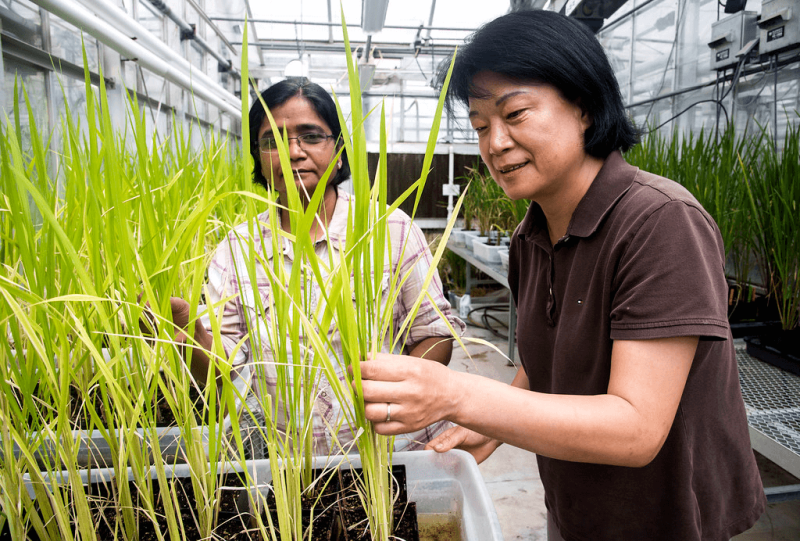Genetic engineering and gene-editing tools are by no means a panacea for the time-sensitive agricultural and food-related challenges we face – but they could help, if given the opportunity.
“Advantages of genome editing are that these changes are precisely targeted and can be made within already excellent plant varieties, improving one trait, such as disease resistance, without altering any other traits,” says [Dr. Kevin] Pixley. “This contrasts with most breeding techniques, where mating a disease-resistant parent with another excellent parent produces progeny with half of the traits from each parent.”
A variety of laboratory techniques can be utilized to create transgenic crops. A simplistic overview of the process is as follows:
- Scientists decide which trait they want to insert into a plant and identify an organism that possesses the gene encoding that trait.
- The gene is isolated and copied, typically using polymerase chain reaction (PCR).
- To insert the gene into the organism’s cells, a vector is required that can carry the gene into the plant’s cells, such as a plasmid.
- The plasmid is introduced to the host plant’s cells, either using agrobacterium-based methods or biolistics.
- Once the gene is inserted, the cells are cultured in a laboratory and those that have successfully incorporated the gene are utilized to grow plants.
…
A variety of genome-editing technologies now exist, such as zinc finger nucleases (ZFNs), homing endonucleases or meganucleases (HEs), transcriptional activator-like effector nucleases (TALENs) and the recent Nobel-prize winning CRISPR/Cas nuclease system. While their molecular components differ, these approaches all generate double-strand breaks in the DNA, activating the cell’s endogenous DNA repair pathway.
…
Other agronomic traits introduced using CRISPR technology include fungal, viral and temperature resistance and increased crop yield. Examples of consumer-focused traits include reduced browning, improved shelf-life, reductions in allergens and traits that address broader health issues.































